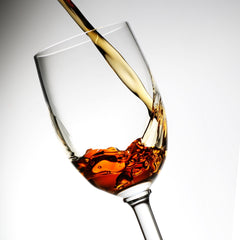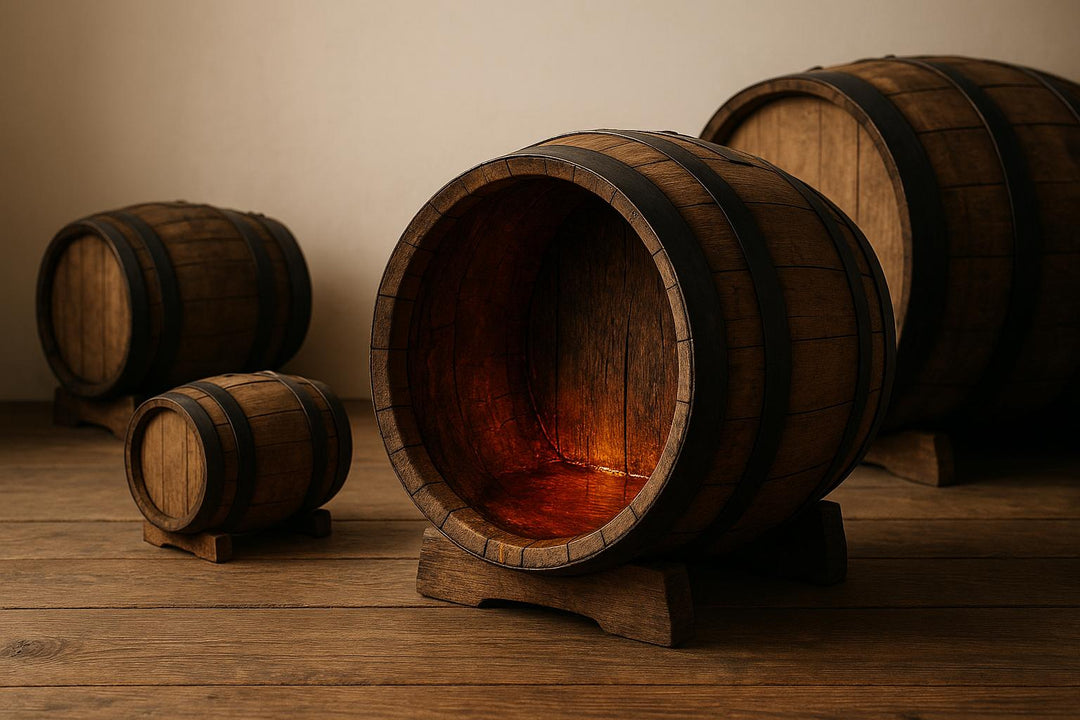
.....So What are Casks Made of?
There are two widely used sources of Oak to create Whisky barrels for maturation; American and European. Oak is used for a variety of reasons, but most notably, its ability to store liquid for the entirety of its maturation without leaking (catastrophic if this isn't the case) and the fact that no undesirable flavours are transferred to the spirit, (which can't be said for some other types of wood). There are many different sizes of casks and obviously, the smaller the cask, the more liquid to wood ratio and thus the more impact the cask has on the liquid.
 Recently, there has been an increase in the use of small casks such as ‘Octaves’ and 'Quarter Casks' and these achieve a more significant impact in a relatively shorter time. Often, the cask has been previously used by another industry, the most common being American Bourbon or Sherry but increasingly, we are seeing many more ‘experimental’ casks including all different types of wines and other spirits.
Recently, there has been an increase in the use of small casks such as ‘Octaves’ and 'Quarter Casks' and these achieve a more significant impact in a relatively shorter time. Often, the cask has been previously used by another industry, the most common being American Bourbon or Sherry but increasingly, we are seeing many more ‘experimental’ casks including all different types of wines and other spirits.
Ex Bourbon Casks: By US law, American whiskey including bourbon has to be matured in brand new American oak casks which are traditionally charred before use. This is where the iconic vanilla and woody notes come from in Bourbon and American Whiskies. After just one use, they can’t be reused in the USA so they are shipped across the pond to Scotland and happily used for maturing Scotch. American Oak is a very mellow wood that contains only a few tannins which results in a smooth and mild tasting whisky. You often find distinctive flavours of caramel, vanilla and rich spice and these are often quite delicate, but sophisticated drams. About ninety percent of all maturing whisky in Scotland is sat in an ex-bourbon cask and sometimes the casks are reworked with additional staves to increase capacity – these are then known as ‘hogshead’ casks.
 Sherry Casks: The other major cask utilised in scotch whisky is the now infamous Sherry Cask. Up until the late 20th century consumption of sherry in Britain was huge but these days, you’ll be hard pressed to find a sherry drinker and most whisky distilleries source their casks from companies that make sherry and then dispose of it purely for the effect it has on the cask. (Often it is distilled into sherry brandy or sherry vinegar). Sherry was traditionally shipped over from Jerez in Spain in Puncheon barrels but since 1986, Spanish law dictates that all its wines have to be bottled in Spain so ‘real’ Sherry and Spanish Wine casks are somewhat of a rarity. There is a reason,
Sherry Casks: The other major cask utilised in scotch whisky is the now infamous Sherry Cask. Up until the late 20th century consumption of sherry in Britain was huge but these days, you’ll be hard pressed to find a sherry drinker and most whisky distilleries source their casks from companies that make sherry and then dispose of it purely for the effect it has on the cask. (Often it is distilled into sherry brandy or sherry vinegar). Sherry was traditionally shipped over from Jerez in Spain in Puncheon barrels but since 1986, Spanish law dictates that all its wines have to be bottled in Spain so ‘real’ Sherry and Spanish Wine casks are somewhat of a rarity. There is a reason,
however, that the industry has gone such a long way to ensure that they can still use sherry casks and that’s to do with the flavours it imparts into the wood and subsequently into the whisky! Rich notes of dark, ripe fruits, nuts, cloves, spices and hints of chocolate, ginger and molasses will all be a sign of a good sherry cask. There are different types of sherry, each with slightly differing characteristics, but if your whisky is dark in colour, with rich fruity and spicy flavours, then there’s a good chance it’s been matured in one.
Fortified Wine Casks: These are casks that were filled with Aperitive or Dessert wines, typically, in the whisky world you’ll find expressions matured in Port, Sauternes, Madeira, Muscat/Muscatel and Rivesaltes amongst others. Fortified wines tend to be sweeter with higher alcohol levels than classic wines and therefore, the casks are noted for adding honeyed and rich notes with floral and fruity aromas and some provide nutty notes and long finishes.

Wine Casks: A more recent trend from some whisky distilleries is to use wine casks, these are often ex red wine casks which interact with the whisky to provide red berry fruit aromas but with a denser and dry mouthfeel on the finish. This is due to the high tannins in red wine and the lower ABV. These casks often give a pinkish hue to the whisky.

Virgin Oak: These are brand new casks which have never held any alcoholic beverage before, these casks allow for maximum interaction with the oak which gives the whisky strong notes of vanilla and oak. By US law, these must be used for new make American Whisky however, some Scotch whiskies are now being matured in this manner too.
 Other Spirits Cask Finishes: With recent updates to The Scotch Whisky regulations, some distilleries have been exploring the use of casks that held other spirits for example Glenfiddich have used Cognac which gives rich stone fruits, and sweet honey aromas and Kilchoman, on Islay have used Tequila casks which give a burst of green agave and citrus fruits notes. These experimental casks typically impart flavours from their previous fill and time will tell if any become mainstays of the whisky maturation process.
Other Spirits Cask Finishes: With recent updates to The Scotch Whisky regulations, some distilleries have been exploring the use of casks that held other spirits for example Glenfiddich have used Cognac which gives rich stone fruits, and sweet honey aromas and Kilchoman, on Islay have used Tequila casks which give a burst of green agave and citrus fruits notes. These experimental casks typically impart flavours from their previous fill and time will tell if any become mainstays of the whisky maturation process. 
Regional Oaks: Another new trend has been towards using locally sourced oak from distilleries around the world. In Japan they have Mizanara oak which is noted to add a sweeter floral aroma compared to the rich vanilla of American oak. Another example is Mackmyra using Swedish oak which gives a dense and spicy flavour profile for the whisky.
There are plenty of other processes that do have impact on the style, taste and flavour of the whisky most notably how the barley is dried, thus peated or non-peated and many of them nuances of each distillery...... but I guess if you want to read more about this, subscribe to our blog and newsletter and one day, very soon, I will write about these too - but for now.....
Slàinte Mhath
Shelley and the RGW Team xx









Do you hold any tasting events in person?
Leave a comment